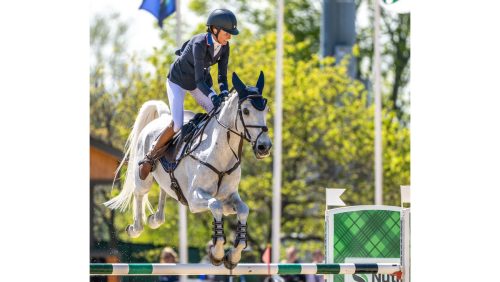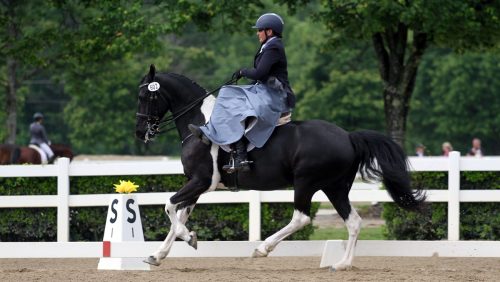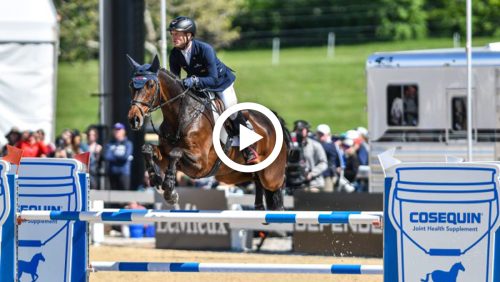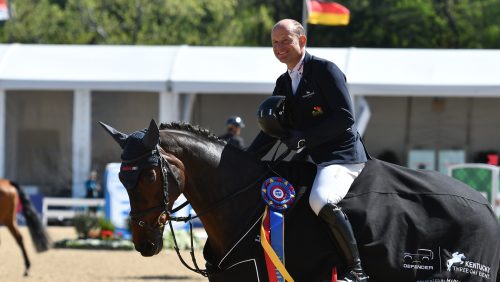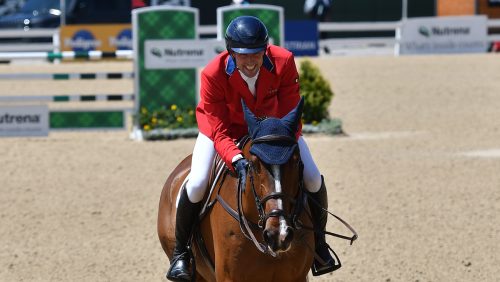After decades of non-standardized methods of measuring noseband tightness, as of May 1, 2025, the Fédération Equestre Internationale will have a standardized method regulating noseband tightness. As part of the 37 action items in the Equine Welfare Strategy Action Plan, the FEI has developed a new tool that FEI stewards will use to determine whether a horse’s noseband is too tight.
“I think we all agree that it’s one of the most challenging and publicized horse welfare challenges that we had,” FEI legal director Mikael Rentsch said during a session of the FEI General Assembly, held Nov. 10-13 in Abu Dhabi. “Up until now, the noseband tightness varied across FEI disciplines significantly.”
The new device, which is 1.7 centimeters (approximately 0.7 inches) thick, must be able to pass between a horse’s nasal bone and its fastened noseband. If the noseband is fastened too tightly for a steward to fit the device through, it must be loosened before the horse competes. If it is found to be too tight during a post-competition tack check, the horse will be eliminated, and the rider will receive a yellow card.

Until now stewards have used their fingers to measure the tightness of the noseband, but because people have different sized fingers, it was an imprecise way of checking fit. The rules were also inconsistent across the FEI disciplines.
Existing dressage and para-dressage rules stipulate stewards should be able to place their index finger between a horse’s cheek and its noseband during the mandatory tack check after a test, and that “a noseband may never be so tightly fixed that it causes harm to the horse.” Meanwhile, eventing and show jumping rules state competitors cannot use a bit or noseband that might cause injury, but list no parameters regarding tightness of the noseband.
At the 2023 General Assembly, the FEI approved veterinary regulations that harmonized the rules for all disciplines, with the new rule requiring the steward to be able to slide the measuring tool between the horses’s nasal bone and its fastened noseband. Initially the rule change was to be implemented Jan. 1, 2025, however the FEI is now pushing back the proposed start date to May 1, 2025, to ensure the devices have made it to all FEI stewards, and that the stewards receive training on how to use them.
The devices are also available to purchase at cost, so that riders and their support staff can ensure their tack is compliant.
ADVERTISEMENT
Though there are existing tools on the market, including one used by the Swiss equestrian federation and the International Society for Equitation Science taper gauge, the FEI chose to develop its own measurement tool based on studies with the help of external experts.
The FEI device was tested over 600 times at FEI events in all disciplines throughout Europe and the United States and has been fine-tuned throughout that process, Rentsch said.
Watch a demonstration of a noseband measuring device in action:
Ideally, noseband checks using the device would take place before a horse enters the competition arena.
“Basically the horse and athlete combination is not allowed to start unless the noseband is readjusted to allow enough laxity,” Rentsch said. “So we don’t want to prevent them [from] competing, but we’re saying if it doesn’t pass through, you can still compete, you just need to readjust the tightness of the noseband.”
See more decisions from the FEI General Assembly on the organization’s website.






